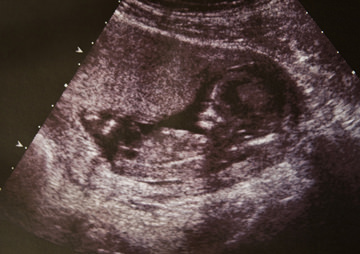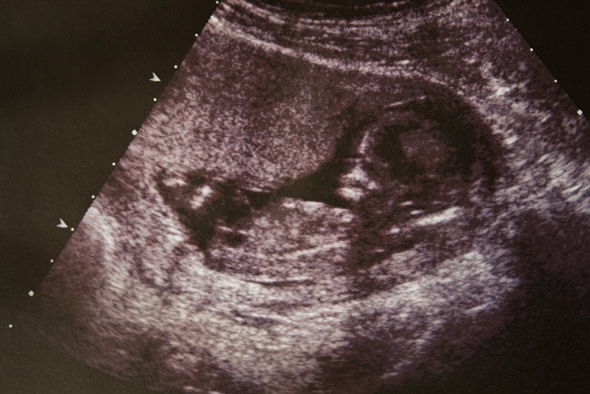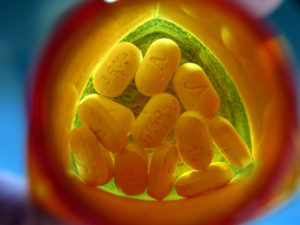Should Women Be Charged With Murder for Giving Birth to Stillborns Due to ‘Fetal Harm’?
Rennie Gibbs, a 16-year-old in Mississippi when she gave birth to a stillborn child, is facing life in prison for taking cocaine during her pregnancy. Hers is among a burgeoning number of cases in which women are prosecuted for allegedly endangering their unborn children.
By Nina Martin, ProPublica
This piece originally ran on ProPublica.
Rennie Gibbs’s daughter, Samiya, was a month premature when she simultaneously entered the world and left it, never taking a breath. To experts who later examined the medical record, the stillborn infant’s most likely cause of death was also the most obvious: the umbilical cord wrapped around her neck.
But within days of Samiya’s delivery in November 2006, Steven Hayne, Mississippi’s de facto medical examiner at the time, came to a different conclusion. Autopsy tests had turned up traces of a cocaine byproduct in Samiya’s blood, and Hayne declared her death a homicide, caused by “cocaine toxicity.”
In early 2007, a Lowndes County grand jury indicted Gibbs, a 16-year-old black teen, for “depraved heart murder” — defined under Mississippi law as an act “eminently dangerous to others…regardless of human life.” By smoking crack during her pregnancy, the indictment said, Gibbs had “unlawfully, willfully, and feloniously” caused the death of her baby. The maximum sentence: life in prison.
Seven years and much legal wrangling later, Gibbs could finally go on trial this spring — part of a wave of “fetal harm” cases across the country in recent years that pit the rights of the mother against what lawmakers, health care workers, prosecutors, judges, jurors, and others view as the rights of the unborn child.
A judge is said to be likely to decide this week if the case should move forward or be dismissed. Assuming it continues, whether Gibbs becomes the first woman ever convicted by a Mississippi jury for the loss of her pregnancy could turn on a fundamental question that has received surprisingly little scrutiny so far by the courts: Is there scientific proof that cocaine can cause lasting damage to a child exposed in the womb, or are the conclusions reached by Hayne and prosecutors based on faulty analysis and junk science?
The case intersects a number of divisive and difficult issues — the criminal justice system’s often disproportionate treatment of poor people of color, especially in drug prosecutions; the backlash to Roe v. Wade and the conservative push to establish “personhood” for fetuses as part of a broad-based strategy to weaken abortion laws. A wild card in the case — Mississippi’s history of using sometimes dubious forensic evidence to win criminal convictions over many years — could end up playing a central role.
Prosecutors argue that the state has a responsibility to protect children from the dangerous actions of their parents. Saying Gibbs should not be tried for murder is like saying that “every drug addict who robs or steals to obtain money for drugs should not be held accountable for their actions because of their addiction,” the state attorney general’s office wrote in a brief to the Mississippi Supreme Court.
But some civil libertarians and women’s rights advocates worry that if Gibbs is convicted, the precedent could inspire more prosecutions of Mississippi women and girls for everything from miscarriage to abortion — and that African Americans, who suffer twice as many stillbirths as whites, would be affected the most.
Mississippi has one of has one of the worst records for maternal and infant health in the U.S., as well as some of the highest rates of teen pregnancy and sexually transmitted disease and among the most restrictive policies on abortion. Many of the factors that have been linked to prenatal and infant mortality — poverty, poor nutrition, lack of access to healthcare, pollution, smoking, stress — are rampant there.
“It’s tremendously, tremendously frightening, this case,” said Oleta Fitzgerald, southern regional director for the Children’s Defense Fund, an advocacy and research organization, in Jackson. “There’s real fear for young women whose babies are dying early who [lack the resources to] defend themselves and their actions.”
Those who share such worries point to a report last year by the New York–based National Advocates for Pregnant Women (NAPW) that documented hundreds of cases around the country in which women have been detained, arrested and sometimes convicted — on charges as serious as murder — for doing things while pregnant that authorities viewed as dangerous or harmful to their unborn child.
The definition of fetal harm in such cases has been broad: An Indiana woman who attempted suicide while pregnant spent a year in jail before murder charges were dropped last year; an Iowa woman was arrested and jailed after falling down the stairs and suffering a miscarriage; a New Jersey woman who refused to sign a preauthorization for a cesarean section didn’t end up needing the operation, yet was charged with child endangerment and lost custody of her baby. But the vast majority of cases have involved women suspected of using illegal drugs. Those women have been disproportionately young, low-income and African American.
Lynn Paltrow, the executive director of NAPW, said that decisions to arrest and charge women often have political and moral overtones and are mostly based on unproved or discredited notions about the effects of prenatal drug exposure.
The U.S. Supreme Court has established stringent rules limiting the use of unproved science in legal proceedings, but these often fall by the wayside in fetal harm cases, Paltrow said. She said that women are typically convicted based on evidence that would be demolished by lawyers with the time and resources to effectively refute it in court – lawyers, say, for pharmaceutical companies whose drugs are challenged in court as being unsafe.
“If a pregnant, drug-using woman were a corporation, her case wouldn’t even get to trial because the rules of evidence require that there be science to prove causation,” Paltrow said.
The quality of the science is very much an issue in the Gibbs case.In a motion to throw out Hayne’s autopsy report, defense lawyers have claimed that that the medical examiner misinterpreted toxicology results and failed to explore alternative causes of death.
Those claims are not the first time Hayne’s work has come under attack. Indeed, Hayne — who effectively served as Mississippi’s statewide medical examiner from the late 1980s to 2008, eventually performing 80 to 90 percent of the autopsies in the state annually — has been a hugely influential and controversial figure in the criminal justice system there for years.
In litigation (much of it by the Mississippi Innocence Project) and news reports (many of them by Radley Balko, now of the Washington Post), defense lawyers and other medical examiners have accused Hayne of being sloppy, exaggerating his credentials, and leaping to conclusions that sometimes had no basis in science. At least four murder convictions based on Hayne’s evidence — one involving an innocent man sentenced to death for the killing of a three-year-old girl — have been overturned since 2007.
Despite having failed to complete his certification test by the American Board of Pathology, Hayne not only practiced for two decades in Mississippi and nearby states, but by his own estimate he performed as many as 1,800 autopsies a year (the National Association of Medical Examiners recommends that a single doctor conduct no more than 250). Mississippi stopped hiring Hayne in 2008, but he continues to testify in cases that he handled before then.
In their court filing, Gibbs’s lawyers cited a capital murder conviction of a 14-year-old boy that the Mississippi Supreme Court overturned because of what it called “scientifically unfounded” testimony by Hayne. That case involved both the prosecutor and the judge handling the Gibbs prosecution. (To read more about Hayne, go here, here, and here.)
Prosecutors have yet to respond to the filing by Gibbs’s lawyers, and they did not return a telephone call from ProPublica seeking comment. But they have vigorously defended Hayne in other cases where his methods and conclusions have been called into question.
Hayne also didn’t respond to a request for an interview.
Michael V. Cory Jr., a Jackson attorney, represented Hayne in a defamation suit against the Innocence Project, which had criticized his work and record. The national organization paid Hayne $100,000 as part of a settlement in that case. Cory said many of the claims against Hayne are unfounded.
“Given the number of autopsies he’s performed, there’s certainly going to be some errors,” Cory said in an interview last week. “But a lot of the criticisms don’t turn out to be fair. Just because he’s been criticized in some cases doesn’t mean there’s any inherent unreliability in his findings. Certainly Dr. Hayne would want the truth to come out.”
Gibbs’s lawyers would not provide many specifics about her background or the events leading up to her baby’s death. The records make this much clear: Gibbs, pregnant at 15, tested positive three times for marijuana and or cocaine during her pregnancy. She then missed several doctor’s appointments.
In November 2006, 36 weeks into her pregnancy, Gibbs ended up in the emergency room at Baptist Memorial Hospital in Columbus, where “fetal demise” was diagnosed and labor was induced. A urine test on Gibbs again detected the presence of cocaine and marijuana. By the day after Samiya’s delivery, Hayne had noted that the probable cause of death was homicide.
Gibbs’s lawyers spent the first several years trying to persuade the Mississippi Supreme Court to throw out the murder charge. (Gibbs, now 23, has been out on bail for much of the time.) They filed their motion to exclude Hayne’s testimony last year.
Expert witnesses hired by the defense claim that the toxicology results didn’t actually support Hayne’s findings. Although Samiya’s blood showed traces of benzoylecgonine, a cocaine byproduct, cocaine itself was “not detected,” according to the lab that did the tests. Kimberly Collins, a forensic pathologist in Atlanta associated with Emory University, said in an affidavit: “It is impossible to conclude from the very small amount of benzoylecgonine that the stillbirth was caused by cocaine toxicity.” Two other defense experts concurred.
The experts maintain that there were other problems with the findings as well. Hayne, they say, did not order tests to rule out infection or fetal abnormality, two common causes of stillbirth. Hayne said that Gibbs’s placenta was normal, but closer examination, the defense experts assert, showed the presence of blood clots — a sign that the baby’s oxygen supply had been cut off. (In a 2011 study by a consortium of researchers around the U.S., 24 percent of stillbirths were caused by blood clots or other placenta abnormalities.)
The experts said cocaine has been linked to one kind of devastating outcome — placenta abruption (when the placenta pulls away from the uterus), which can lead to stillbirth. That was not present in Samiya’s death.
In Gibbs’s case, the evidence pointed to “umbilical cord compression” as the likeliest explanation for Samiya’s death, the defense experts said.
At the same time, Gibbs’s attorneys are challenging the very notion that cocaine exposure in utero causes widespread fetal mortality or serious, long-lasting harm in children. The idea dates back to the 1980s and ‘90s, when the crack epidemic led to fears about a generation of developmentally impaired “crack babies.” And it has gained a kind of credence over the years as OB/GYNs, parenting sites, and many others have urged women to avoid all kinds of substances during pregnancy — everything from tobacco and wine to raw-milk cheese, sushi and hair dye.
But the concerns about cocaine have proven to be “wildly overstated,” said Deborah A. Frank, a pediatrician and researcher at Boston University School of Medicine who has participated in numerous studies on the topic over the past two decades.
“There is no consistent association between cocaine use during pregnancy and serious fetal harms, birth defects, or serious long-term physical or developmental impairments,” Frank wrote in an affidavit. “There is no convincing evidence that prenatal cocaine exposure is more strongly associated with fetal harm or developmental deficits than exposure to legal substances, like tobacco and alcohol, or many other factors.”
Frank and other researchers said they have been trying to set the record straight for years, but their arguments have rarely had a hearing in court, Paltrow said. Defense lawyers — often public defenders — don’t have the resources to hire experts to challenge prosecutors, and they may not even realize what the science actually says. It’s not unusual for women to plead guilty in such cases to avoid the risk of losing at trial — and getting a longer sentence. (Indeed, at least two mississippi women are believed to have pleaded guilty to manslaughter in the early 2000s, Gibbs’ lawyers said.)
“For a whole host of reasons, women should not be prosecuted for this sort of thing,” said Robert McDuff, one of Gibbs’ lawyers. “But if they are going to be, it needs to be based on scientific research and analysis that is more reliable than what we have now.”
Cory, Hayne’s lawyer who also does criminal defense work, acknowledged that, “In the criminal justice system, where the stakes are higher, the resources are not there to challenge the science. The judge, who is the gatekeeper, has to use the information they have. You get some crazy results in criminal cases. Science where there is no consensus gets admitted as if there was consensus.”
Gibbs’ attorneys are hopeful that the judge in their case may yet throw out the depraved-heart murder charge. Meanwhile, one thing the evidence does suggest: “Incarceration or the threat of incarceration have proved to be ineffective in reducing the incidence of alcohol or drug abuse,” the American College of Obstetrics and Gynecology’s Committee on Health Care for Underserved Women wrote in 2011.
Moreover, the committee determined, pregnant women who fear the legal system avoid or emotionally disengage from prenatal care — the very thing that might help assure that they give birth to healthy babies.
“Drug enforcement policies that deter women from seeking prenatal care are contrary to the welfare of the mother and fetus,” it said.
Your support matters…Independent journalism is under threat and overshadowed by heavily funded mainstream media.
You can help level the playing field. Become a member.
Your tax-deductible contribution keeps us digging beneath the headlines to give you thought-provoking, investigative reporting and analysis that unearths what's really happening- without compromise.
Give today to support our courageous, independent journalists.




You need to be a supporter to comment.
There are currently no responses to this article.
Be the first to respond.